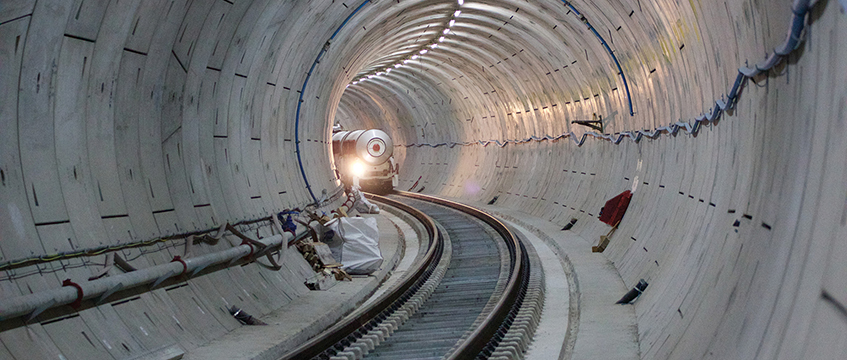TfL plans property tax to fund £30bn Crossrail 2
Residential and commercial property owners within 1km of Crossrail 2 stations could be landed with hundreds of millions of pounds in extra taxes to pay the estimated £30bn cost of building the line, under plans being drawn up by Transport for London.
TfL is considering introducing a levy on property owners to pay for the railway via the creation of three zones around each Crossrail 2 station. Each zone, mapped out in concentric circles, would have a scaled charge, known as the Transport Property Charge, reducing with the distance from the station.
It is estimated that for a station such as Dalston, between £3.5m and £7.8m could be generated per year from a levy of residential owners within a 1km “zone of influence” around the station. The levy would be collected as part of council tax for more than 10 years.
Residential and commercial property owners within 1km of Crossrail 2 stations could be landed with hundreds of millions of pounds in extra taxes to pay the estimated £30bn cost of building the line, under plans being drawn up by Transport for London.
TfL is considering introducing a levy on property owners to pay for the railway via the creation of three zones around each Crossrail 2 station. Each zone, mapped out in concentric circles, would have a scaled charge, known as the Transport Property Charge, reducing with the distance from the station.
It is estimated that for a station such as Dalston, between £3.5m and £7.8m could be generated per year from a levy of residential owners within a 1km “zone of influence” around the station. The levy would be collected as part of council tax for more than 10 years.
‘You benefit, you pay’
[caption id="attachment_922272" align="alignright" width="211"] CROSSRAIL 2 ROUTE: Click to view[/caption]
Revealing the proposed tax at EG’s Residential Summit this week, William Jackson, development consultant for Crossrail 2, said: “Somebody’s got to pay for this and the people in those zones are going to make an increase in value on their house. If you benefit from it somehow you should pay for it.”
According to GVA, the value gain for owners of property around Crossrail stations by 2025 will total £20bn – almost 1.5 times the cost of the £16bn project. The value added to property around Crossrail 2 stations could be up to £60bn – double the cost of the project.
Residential owners would have the option of rolling up the proposed charge and paying a total amount when the property is sold. However, it is likely that an interest rate charge would need to be levied, which could make the practice prohibitive.
A similar levy was imposed on Londoners to pay for the 2012 Olympics. A £20 precept was added to all London council tax bills to contribute £625m towards the cost of the Games.
Commercial property charge
A commercial Transport Property Charge for Crossrail 2 is also being considered by TfL. It would be collected by the Greater London Authority and could be extended across the central London activity zone.
Commercial occupiers already pay for Crossrail via business rates, but the TPC would be levied on landlords.
TfL is investigating whether its introduction would require an addition in the hybrid bill to prevent property owners passing on the charge to occupiers via rental increases.
Read more: The Crossrail effect: how the development has changed central London rents
Jackson said lessons had been learnt from the failure to capture any of the circa £545m uplift in property values around Crossrail stations. If successful, the charges could be replicated by the Department for Transport on other infrastructure projects across the country.
James Cooksey, chairman of Westminster Property Association and director of central London at the Crown Estate, said: “We’ve thought carefully about the prospect of Crossrail 2 and the funding does need significant work to ensure we learn the lessons from Crossrail.
“There are a variety of funding streams that could be applied… and you need a comprehensive package looking at all the options.
Read more: Helical secures £120m Farringdon East Crossrail development
“A level of value capture is something the property industry would be willing to explore and debate. Clearly the devil is in the detail and it depends on the scale and the duration of how that charge is put together, but we would be keen to engage in something that’s fair and equitable and is proportionate and at the same time enables Crossrail 2 to progress, because it’s an essential piece of infrastructure for London.”
Other options being considered to maximise value from Crossrail 2 include the creation of a special-purpose vehicle.
The proposed route of Crossrail 2 runs from Broxbourne in Hertfordshire to Epsom in Surrey, passing through central London via stops including Tottenham Court Road, Victoria, Chelsea and Clapham Junction.
Independent review
The government has commissioned an independent affordability review to examine ways of making the scheme more affordable.
The review, which is being carried out by Mike Gerrard, former managing director of Thames Tideway Tunnel, is to submit an interim report to the Department for Transport this summer.
Following the outcome of the review and a positive decision by the government on the updated business case, TfL plans to move the project forward to the next stage and proceed with further formal public consultation.
To send feedback, e-mail Louise.Dransfield@egi.co.uk or tweet @DransfieldL or @estatesgazette











